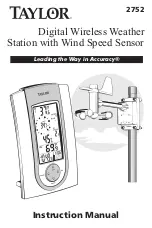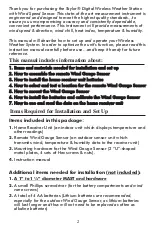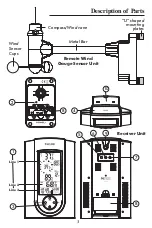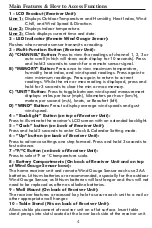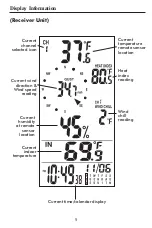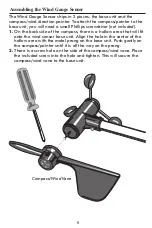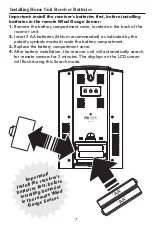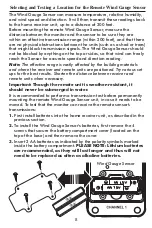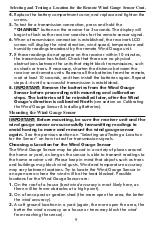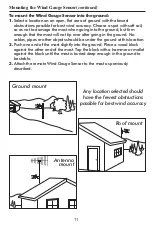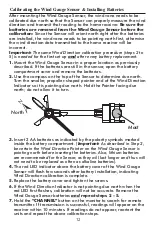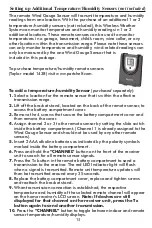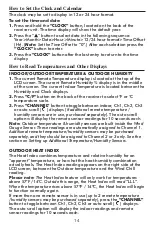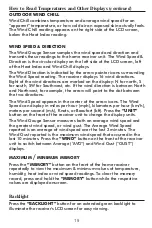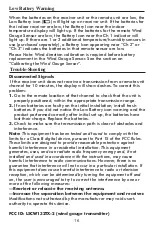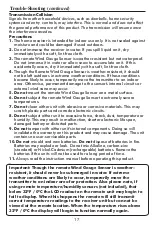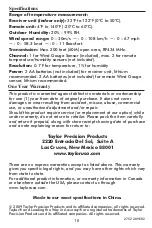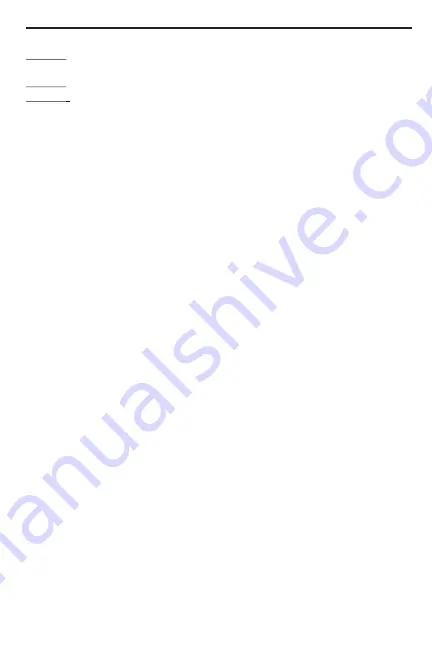
4
Main Features & How to Access Functions
1 - LCD Readout
:
Line 1:
Displays Outdoor Temperature and Humidity, Heat Index, Wind
Chill, and Wind Speed & Direction.
Line 2:
Displays indoor temperature.
Line 3:
Clock displays current time and date.
2 - LED Indicator (
Remote Wind Gauge Sensor
):
Flashes when remote sensor transmits a reading.
3 - Multi-Function Button (
Receiver Unit
):
A) “CHANNEL” Button:
Press to view the readings of channel 1, 2, 3 or
auto scroll (which will show each display for 10 seconds). Press
and hold 3 seconds to search for a remote sensor signal.
B) “MEMORY” Button:
Press once to view maximum temperature,
humidity, heat index, and wind speed readings. Press again to
view minimum readings. Press again to return to current
readings. While the min or max reading is displayed, press and
hold for 3 seconds to clear the min or max memory.
C) “UNIT” Button:
Press to toggle between wind speed measurement
displays: miles per hour (mph), kilometers per hour (km/h),
meters per second (m/s), knots, or Beaufort (bft).
D) “WIND” Button:
Press to display average wind speeds and gust
wind speed.
4 – “Backlight” Button (
on top of Receiver Unit
):
Press to illuminate the receiver's LCD screen with an extended backlight.
5 – “Clock” button (
on back of Receiver Unit
):
Press and hold 3 seconds to enter Clock & Calendar Setting mode.
6 – “Up” button (
on back of Receiver Unit
):
Press to advance settings one step forward. Press and hold 3 seconds to
fast advance.
7 –ºF/ºC Button (
on back of Receiver Unit
):
Press to select °F or °C temperature scale.
8 - Battery Compartments (On back of Receiver Unit and on top
of Wind Gauge Sensor base):
The home receiver unit and remote Wind Gauge Sensor each use 2AA
batteries. Lithium batteries are recommended, especially for the outdoor
Wind Gauge Sensor, as lithium batteries will last longer and thus will not
need to be replaced as often as alkaline batteries.
9 - Wall Mount (On back of Receiver Unit):
The receiver features a recessed key hole to secure each unit to a nail or
other appropriate wall hanger.
10 - Table Stand (Fits on back of Receiver Unit):
Allows stable placement of receiver unit on a flat surface. Insert table
stand prongs into slots located at the lower back side of the receiver unit.
(
Receiver Unit
)

